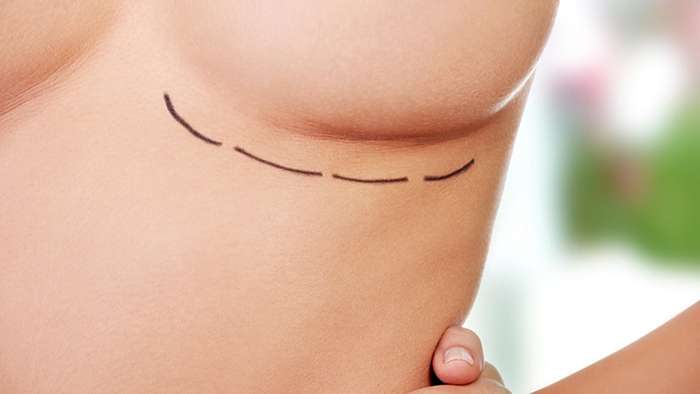Dr. Patricia McGuire of St. Louis, Missouri is a board certified plastic surgeon who specializes in cosmetic and reconstructive surgery of the breast. As such, she has spent a considerable part of her career answering questions from breast augmentation patients. Based on her experience, most women have four major areas of concern when it comes to deciding whether or not to get implants:
- What type of implant?
- Where should it go?
- What kind of incision?
- What size implant?
by Katherine Stuart
and Patricia McGuire, MD
What Type of Implant?
There are only three types of implant on the market today.
- Saline implants
- Cohesive Gel Silicone Implants
- Highly Cohesive Gel Silicone Implants
Each one will work on any patient. Deciding on the right one is going to depend on a patient’s anatomy, desired outcome and personal preference. Saline implants have the advantage of being the least expensive and they leave the smallest scar. Furthermore, if they leak, you know right away. Also, saline is a natural fluid in the body so if the implant develops a tear, your body will simply reabsorb the saline. No harm. No foul. The main disadvantage to saline is that they don’t look or feel as natural as silicone.
Silicone implants were taken off the market in 1992 after a considerable amount of bad press. Over the next 15 years, extensive studies were done on the link between silicone leaks and auto immune disease. None was found and a new cohesive gel silicone implant was reproved by the FDA in 2006. This new implant has a much stronger shell and the gel, instead of being like oil, is now more the consistency of jello. Dr. McGuire is a fan of gel implants. “They feel more natural. They look more natural. They last longer.” The disadvantage to silicone is that if there is a leak, the patient may not know about it until some kind of outside evaluation like a routine mammogram.
The difference between the cohesive gel and highly cohesive gel implant is the shape. The first is round while the latter is teardrop shaped and the consistency of a gummy bear. The right choice is going to come down to a patient’s anatomy and what look she wants. Round implants tend to deliver a rounder, fuller breasts while gummy bear implants deliver more of a sloped breast. “For breast reconstruction, I like the shaped implants.” Dr. McGuire also thinks they work best for patients with constricted breasts.

Where Should It Go?
The advantage to placing an implant above the muscle is that it is less painful and it can help fill a sagging breast for those patients who are on the borderline for needing a breast lift. The disadvantages are that the implant is in the breast tissue and can interfere with mammography. There’s some evidence of a higher incidence of capsular contracture, and, as we get older, our skin looses elasticity so the implant may drop or sag over time.
The main advantages to below the muscle placement is that the muscle holds the implant up. It’s better for mammograms, and there may be a lower incidence of capsular contracture. The disadvantage is that it’s a little bit more painful. However, Dr. McGuire “would rather you be uncomfortable for a couple of days and have a breast that looks good for the long term.”
What Kind of Incision?
Any implant can be placed either through the armpit, through the areola or under the breast. However, most surgeons these days prefer an under the breast incision since it allows them to work without touching the breast tissue which may lower the risk for both infection and capsular contracture. The disadvantage to this placement is that there is a visible scar although it’s easily hidden within the breast crease.
What Size Implant?
“I use the patient’s anatomy to determine what size implant. Not what your friend had. Not what you saw on the internet.” Dr. McGuire takes careful measurements in order to determine which implant will best fit your chest space. As implants get bigger, they get wider. “By respecting your anatomy, we can get you a breast that looks good long term.”